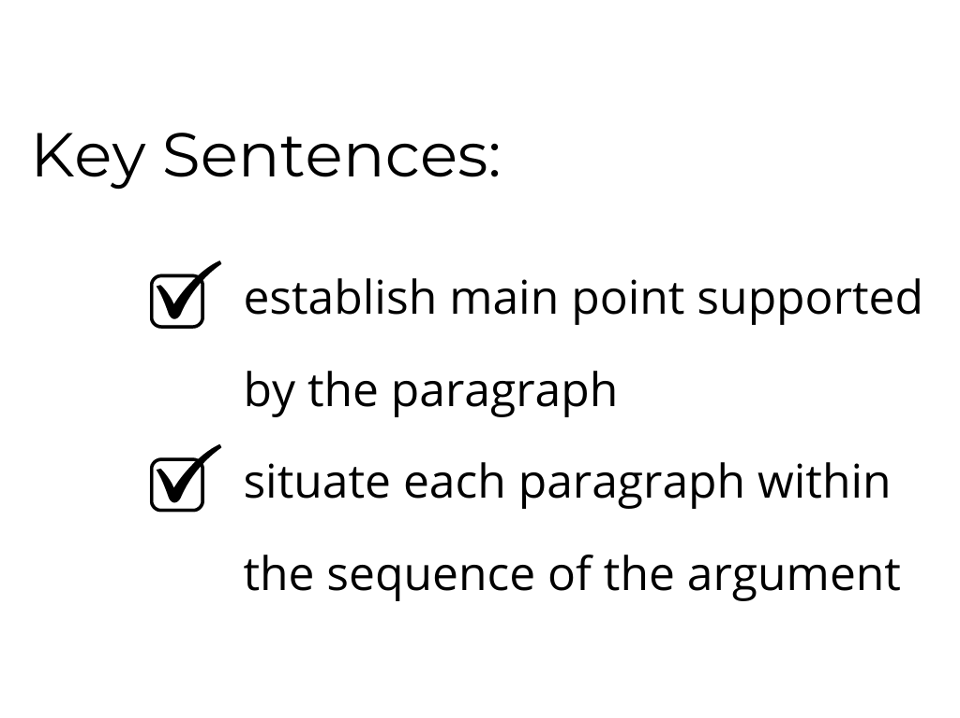71 Key Sentences
In academic writing, readers expect each paragraph to have a sentence or two that captures its main point. They’re often called “topic sentences,” though many writing instructors prefer to call them “key sentences.” The phrase “topic sentence” could be misleading, because it makes it seem like it always announces the topic of a paragraph or that it is always one sentence, but those things may not always be true. Calling it a “key sentence” reminds us that it expresses the central idea of the paragraph. And sometimes a question or a two-sentence construction functions as the key.
Key sentences in academic writing do two things. First, they establish the main point that the rest of the paragraph supports. Second, they situate each paragraph within the sequence of the argument, a task that requires transitioning from the prior paragraph.

Consider the following examples about epidemiological evidence, meaning evidence related to the study of diseases. Etiological studies refer to the study of the origin of a disease.
Version A:
Now we turn to the epidemiological evidence.
Version B:
If the evidence emerging from etiological studies supports the hypothesis, the epidemiological evidence is also compelling.
Both versions convey a topic; it’s pretty easy to predict that the paragraph will be about epidemiological evidence, but only the second version establishes an argumentative point and puts it in context. The paragraph doesn’t just describe the epidemiological evidence; it shows how epidemiology is telling the same story as etiology. Similarly, while Version A doesn’t relate to anything in particular, Version B immediately suggests that the prior paragraph addresses the biological pathway (i.e., etiology) of a disease and that the new paragraph will bolster the emerging hypothesis with a different kind of evidence (epidemiological). The topic or key sentences make it easy for the reader to keep track of how the essay moves from one paragraph and idea to the next.
Topic sentences have a topic and an angle, just like thesis sentences. But the angle of topic sentences usually is smaller in range than that of the thesis sentence. Very often the topic remains the same from thesis to topic sentence, while the angle shifts as the writer brings in various types of ideas and research to support the angle in the thesis.
Attribution
“Key Sentences,” Lumen Learning, CC BY: Attribution, https://courses.lumenlearning.com/englishcomp1/chapter/topic-sentences/.
